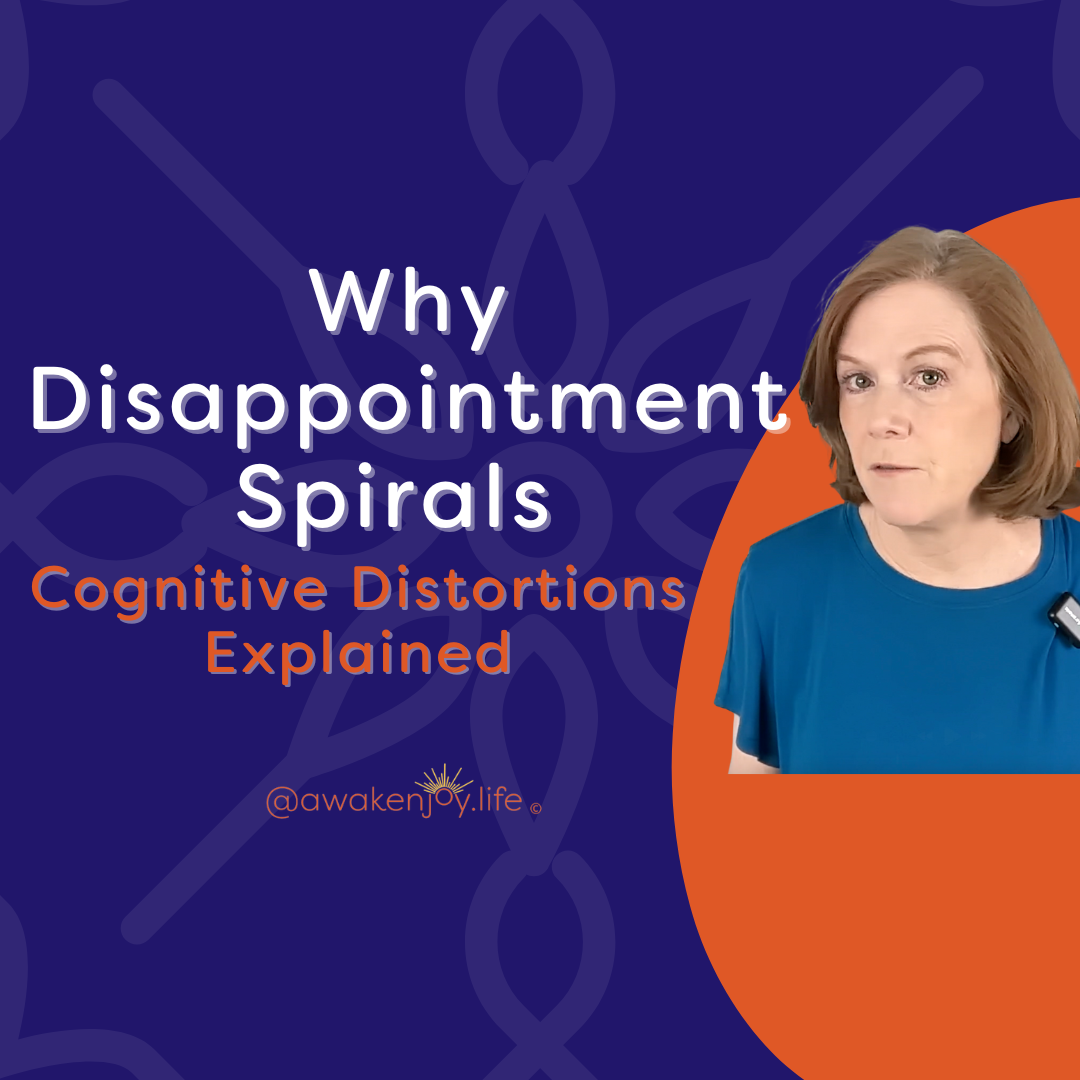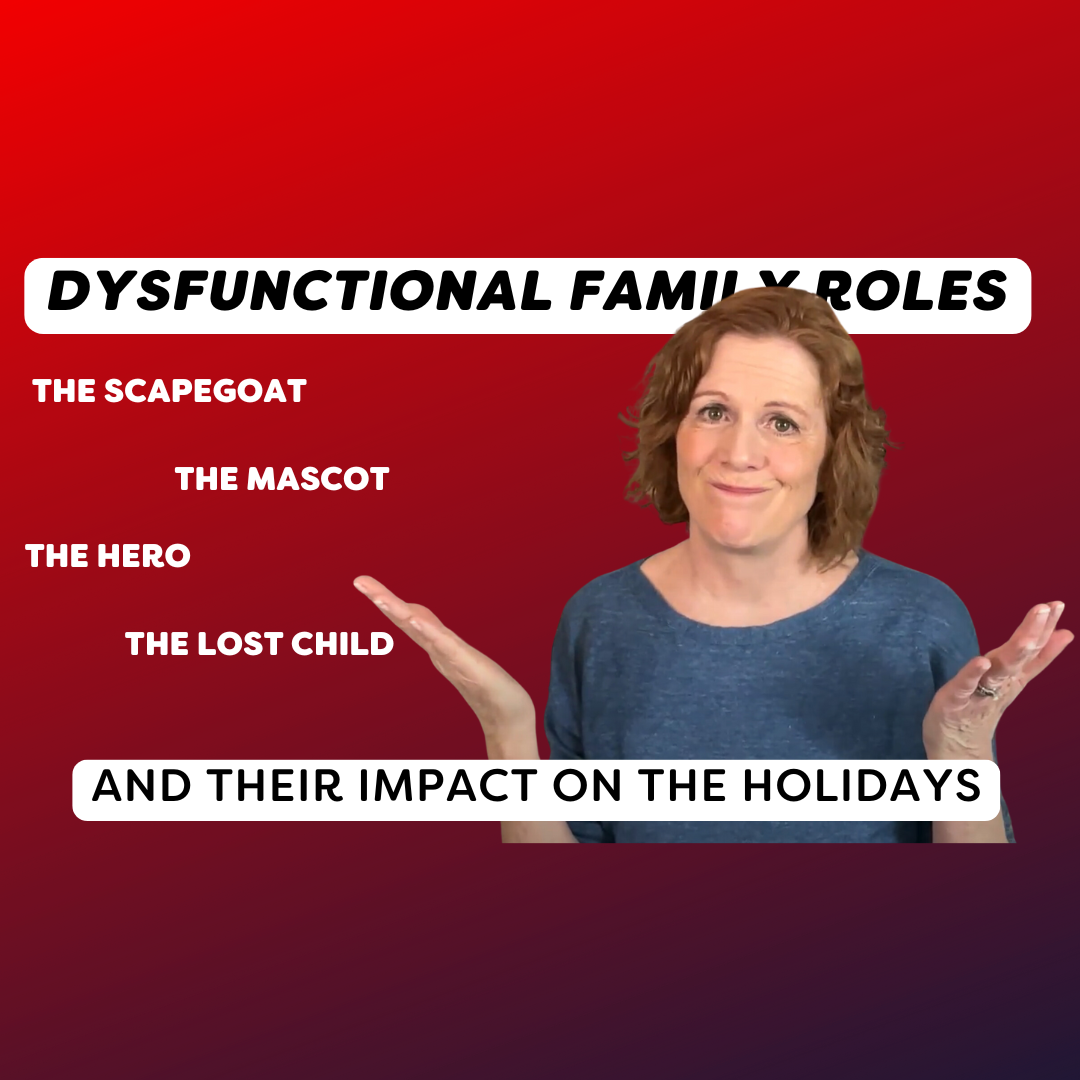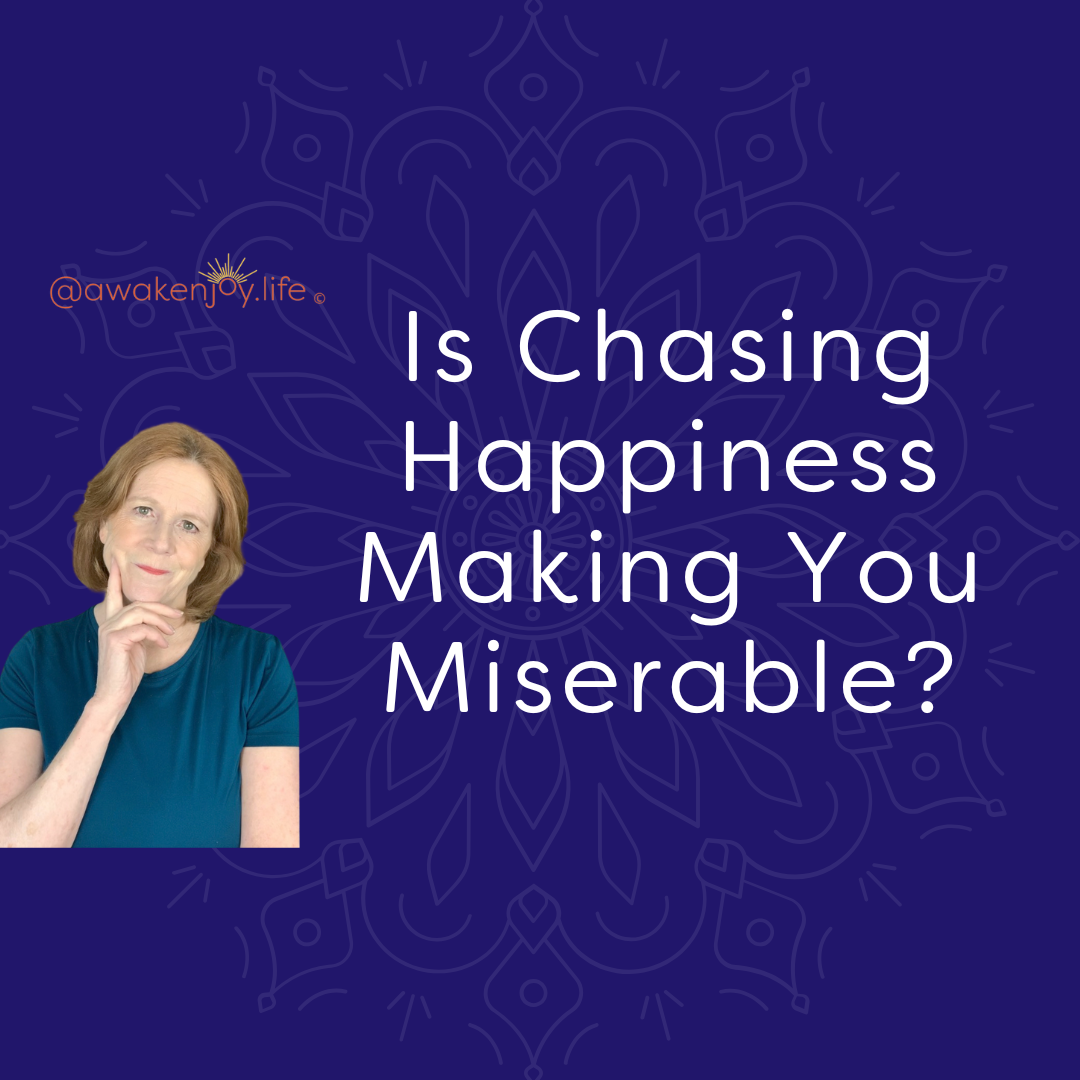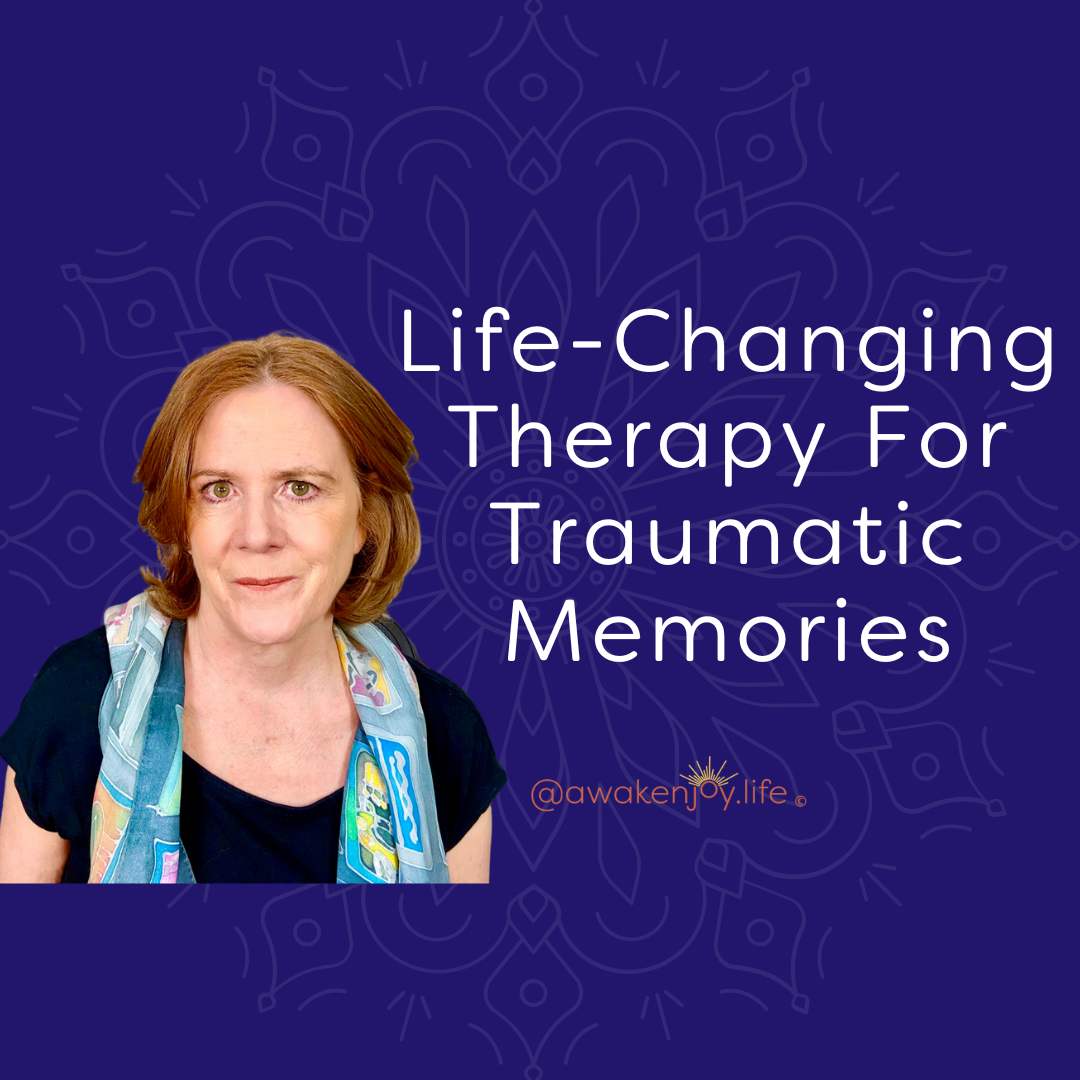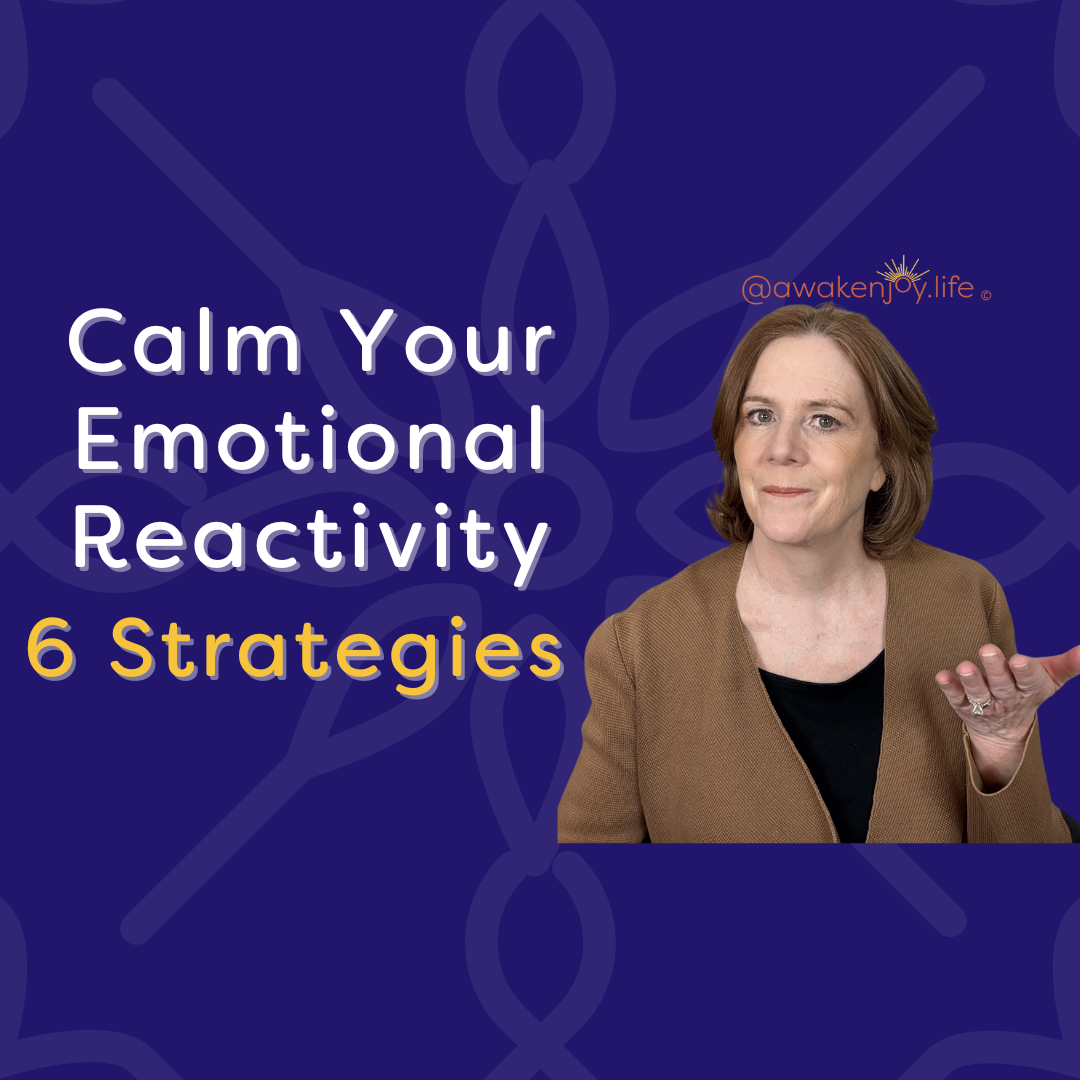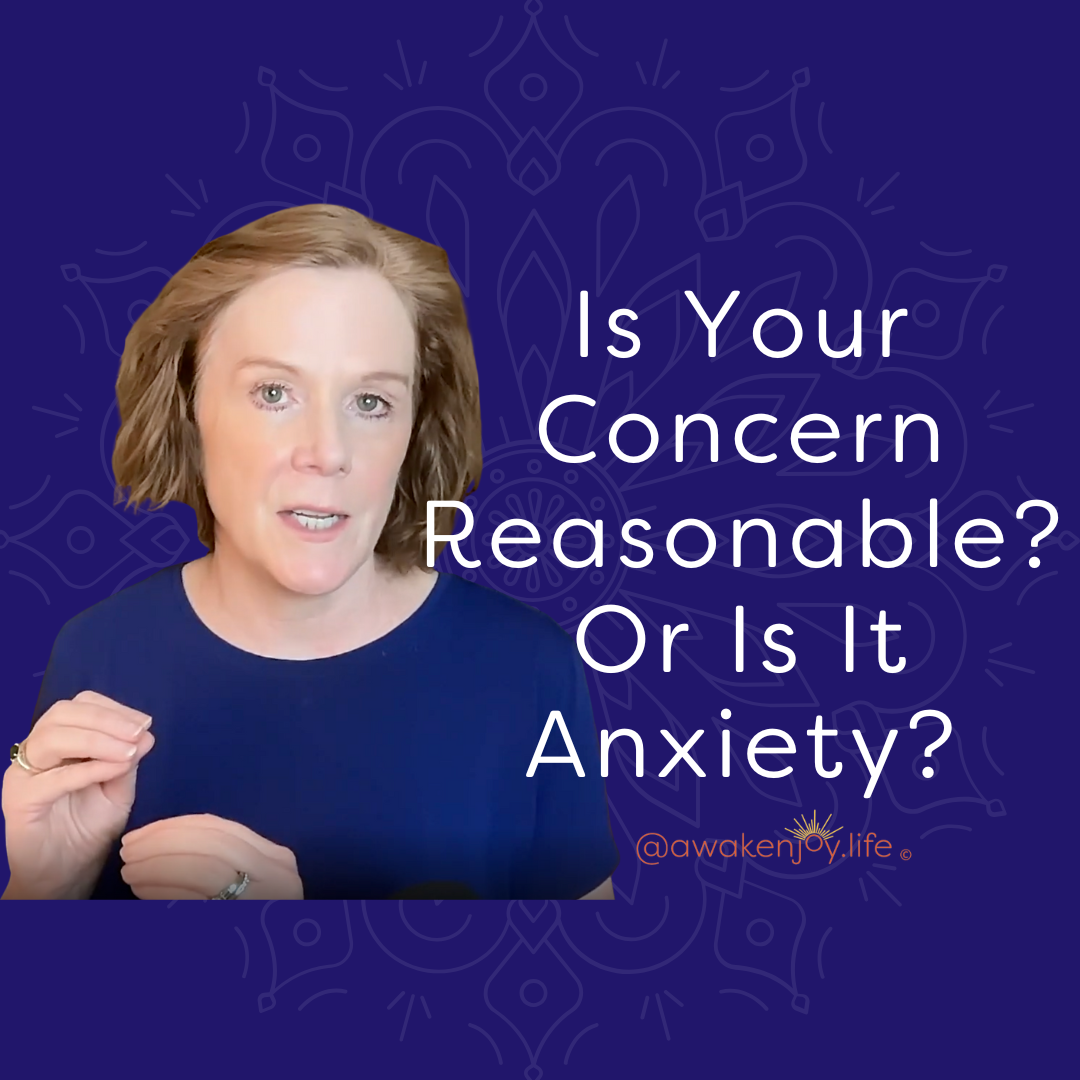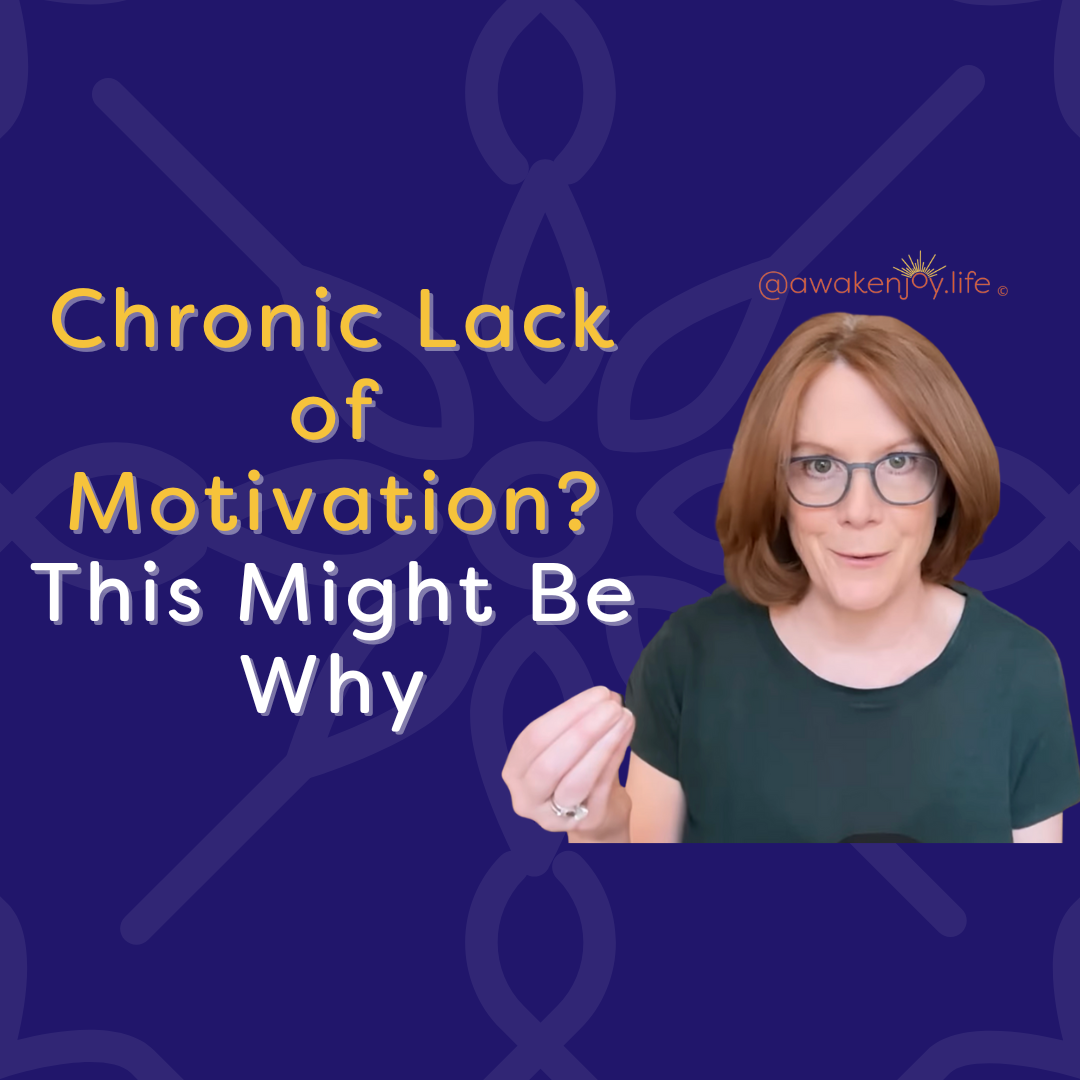Anxiety Physical Symptoms Out of the Blue

Does your anxiety hit you - WHOOSH! - out of nowhere?
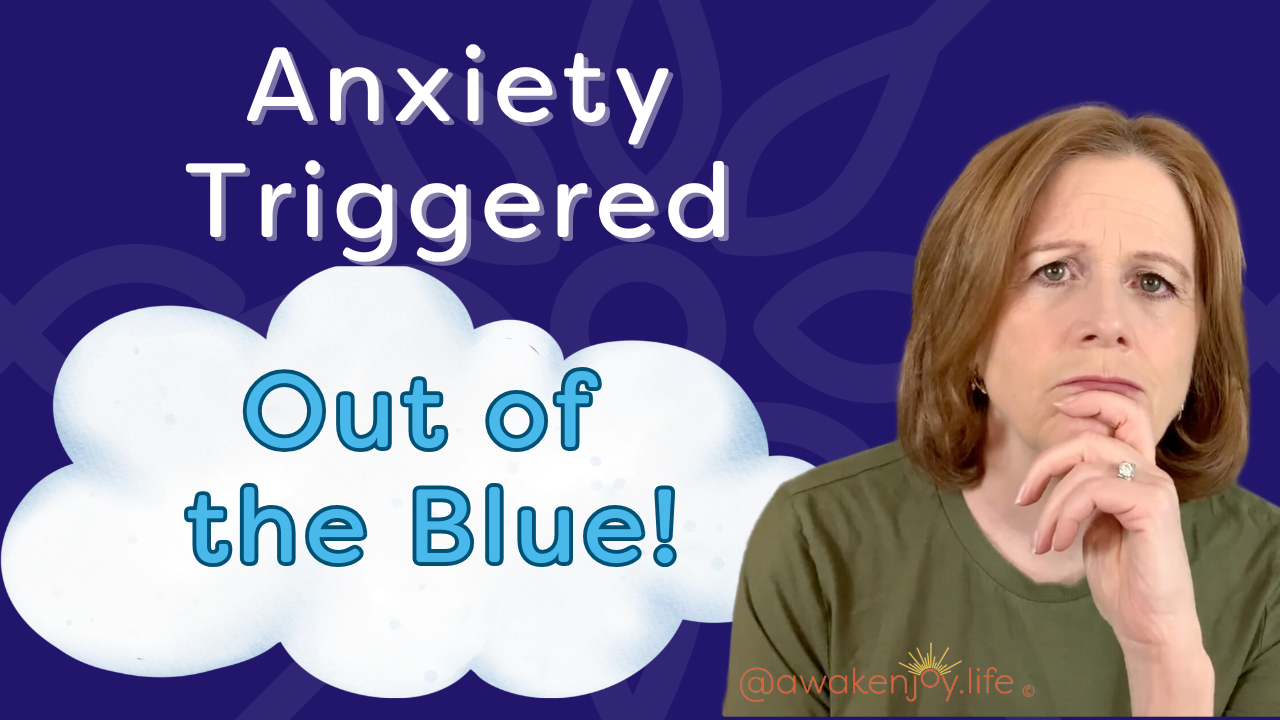
You might be walking along, not thinking about anything that would make you anxious, when all of a sudden you're filled with anxious feelings.
There's a reason this happens, and I'm going to share it with you today. Understanding subconscious triggers can help you understand yourself and calm your anxiety.
The Frustrating Reality of Somatic Anxiety
We're often told that anxiety starts with thinking, with our cognitions. People or doctors will say, "You must have been thinking about something that made you anxious. There must be something happening in your life that makes you anxious."
This can be incredibly frustrating and invalidating for people who experience somatic anxiety—anxiety that manifests in the body.
Very often, people who experience anxiety this way become frustrated because the anxiety management tools shared by therapists, doctors, YouTubers, and friends don't relate to their experience. In this blog, I'll help you make the connection between how you experience anxiety and how these tools actually can help you, when applied correctly.
Understanding Subconscious Memories
Very intense experiences become linked in our memory bank with the physiological feelings we experienced at the time. This can happen with positive memories and with very negative and upsetting memories.
Our hippocampus, one of the key parts of our brain that handles memory, encodes our memories with sights, sounds, feelings, smells and tastes—but not always with a complete "story" of the event.
Positive Memory Links
On the positive side, there might be a particular smell—like cinnamon or something your grandmother cooked—that brings you a lot of pleasure. Or it could be the way the landscape feels and smells during the first snow. You might have many positive memories, and when those sensory elements recur, you feel that positive response. Sometimes this links to an something you do remember, but not always.
Traumatic Memory Links
With traumatic memories, these links can be formed in a very intense way. For both major traumas and smaller traumas, we can have encoded memories that don't reach our conscious mind, but these memories are encoded with the physiological feelings of the experience. When these physiological responses are triggered, they can feel completely out of your control, making you feel powerless to stop or change the feelings.
The intensity of the link between sensory information and emotional response is related to the intensity of the initial trigger event. The link is also strengthened each time you experience the trigger.
Preverbal memories can also be encoded this way and trigger these feelings.
However, the practices needed to calm these responses is the same whether the initial experience is conscious, subconscious or preverbal.
Understanding Consciousness as a Spectrum
Basically, consciousness means to be aware. However, this is actually a controversial term, with many people holding different definitions. Yet I think it is helpful to think about consciousness as existing on a spectrum.
**Beginning of the Spectrum**: Sensory information enters without your cognitive awareness—without your frontal lobe thinking or language centers processing it. Sensory information comes in and impacts you. Some would call this subconscious, but it's really at the beginning of consciousness because part of you is conscious of it—you're taking in that sensory information.
**Other End of the Spectrum**: Full cognitive awareness. You're aware of the complete experience. You can think about it, remember it, see what's happening now, and feel the sensory information.
Our consciousness operates along this wide spectrum, and all of it impacts us.
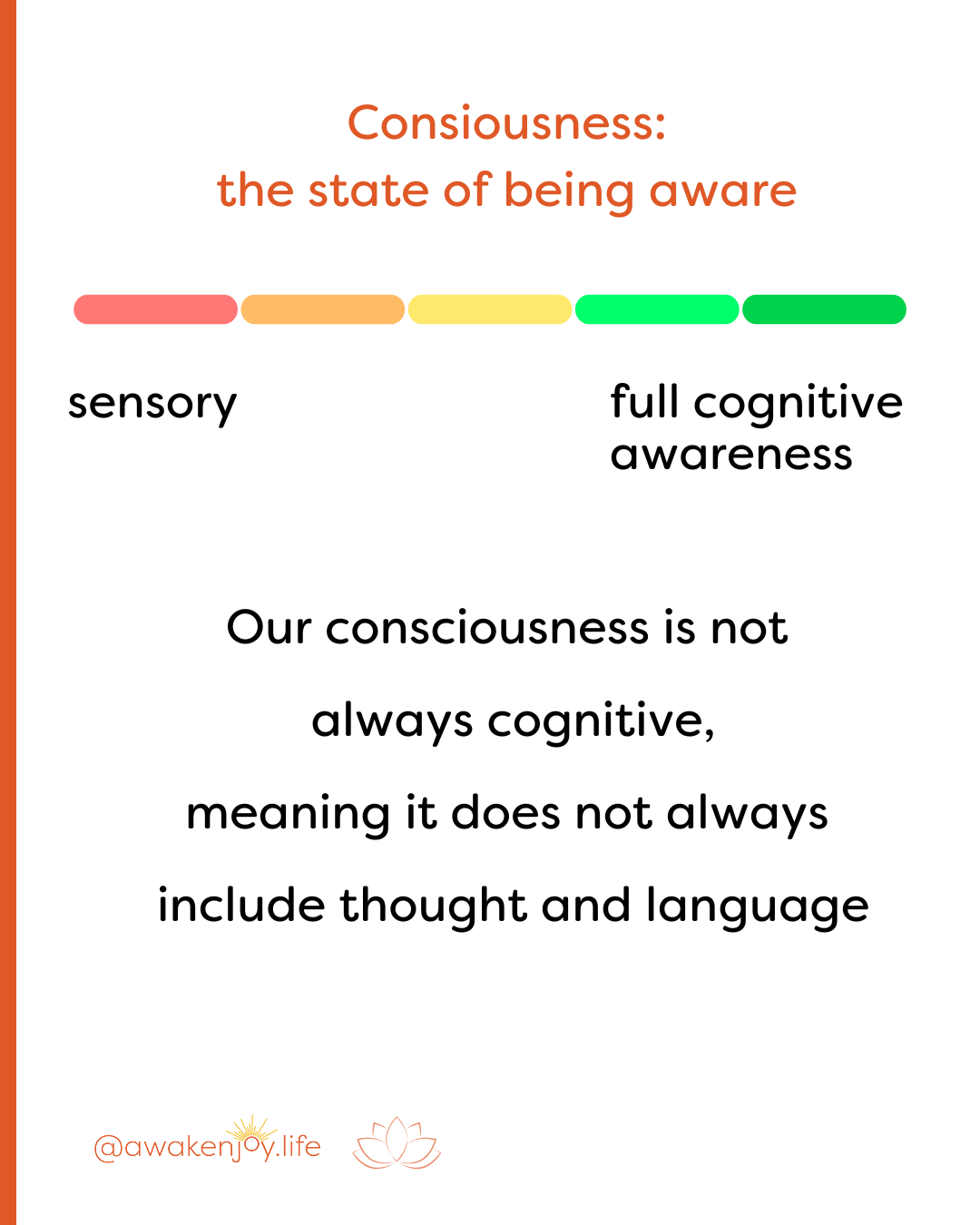
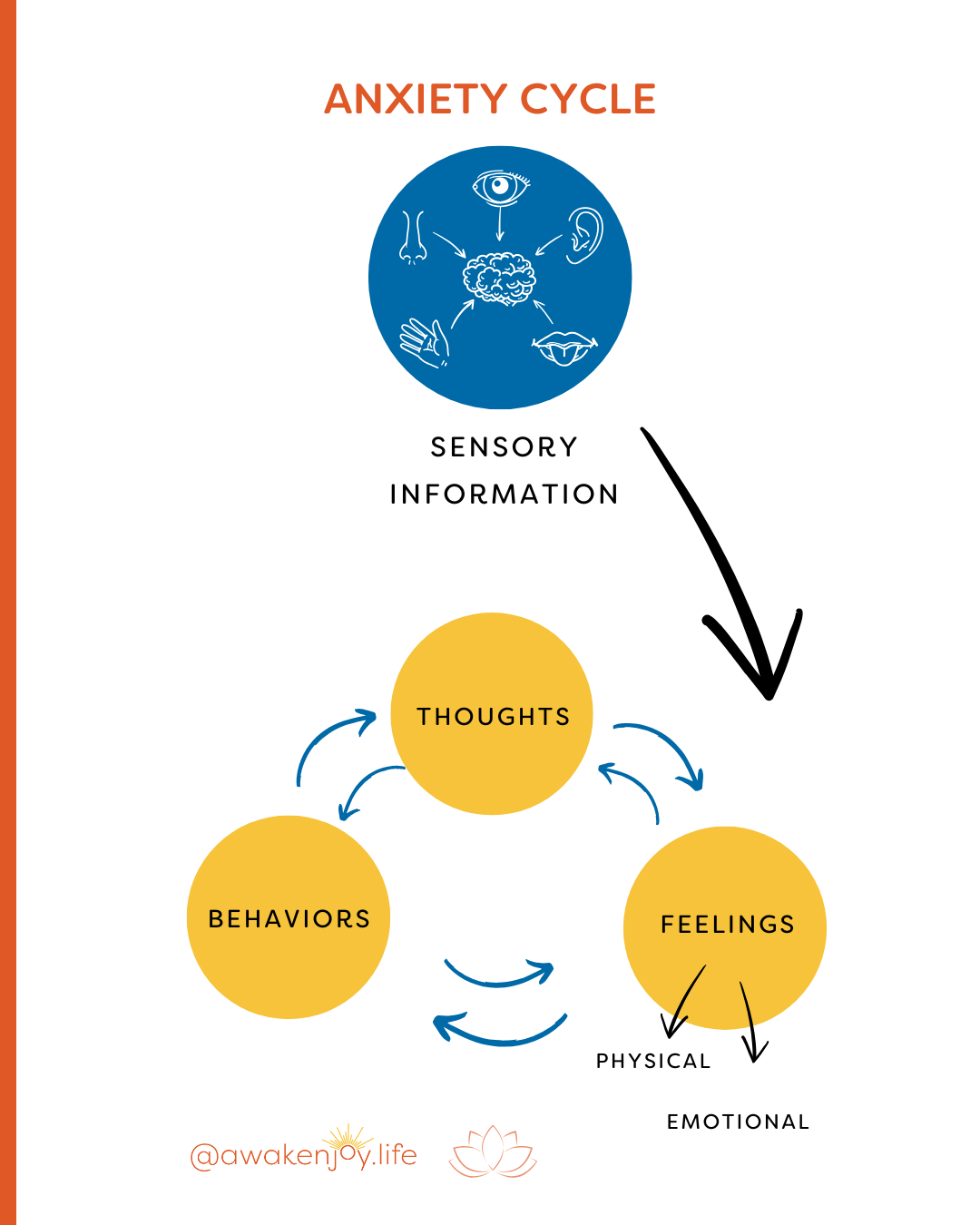
The Anxiety Cycle That Starts with Physical Feelings
Here's how the anxiety cycle often works when it begins with physical feelings:
1. **Sensory information enters** and impacts your feelings (whether emotional, physical, or both)
2. From there, it typically leads to anxious thoughts*
3. It can also lead to anxious behaviors
4. Those anxious thoughts and behaviors then increase the anxious feelings
A key point to remember is that you might not be able to stop that initial impact on your feelings. You may not be able to prevent the intake of that sensory information. You might not be consciously aware of it.
So that initial trigger and those initial feelings might still occur.
However, you can still intervene to prevent continuing the cycle in a way that makes it worse.
Why You Can't Always Stop the Initial Trigger
I know this might not be the answer you want: you want to know how to stop those triggers entirely. (There are ways to address this, but it requires significant work and time. I believe EMDR therapy is an excellent approach for this).
However, in the meantime, there are strategies you can implement which can help enormously. (Even if you pursue EMDR therapy, you'll need these tools in place to slow down the entire cycle).
Investigating Your Personal Anxiety Cycle
The key is understanding how this cycle works for you. Take time to really investigate this: after that anxious feeling arises for "no reason," what happens next?
**Where Do Your Thoughts Go?**
Here's an example: those anxiety feelings arrive and then you think, "What's wrong with me? I'll never get better." All sorts of negative core beliefs can underlie these thoughts, such as:
- "I'm defective"
- "I'm in danger"
- "I can't trust anyone"
- "I can't trust doctors"
- "Something terrible must be happening if I feel this way"
These thoughts are usually driven by our negative core beliefs.
I have a free PDF that I developed using EMDR therapy techniques and other approaches to help you identify your negative core beliefs and then transform them. You can download it here.
**What Behaviors Follow This Feeling?**
Do you engage in behaviors that might actually worsen your anxiety, even though they temporarily seem to help?
The types of behaviors that worsen anxiety are either **compulsive** or **avoidant**.
**Avoidant behaviors**: Avoiding something that frightens you when you're anxious temporarily provides relief, but it actually convinces the primitive part of your brain, "Yes, we really do need to fear that." This continues the cycle.
**Compulsive behaviors**: For example, going online to research health symptoms might temporarily provide relief—"I'm doing something about it"—but then you fall down a research rabbit hole that actually continues the cycle and worsens the anxiety.
The Solution: Breaking the Cycle
I know you want to stop those triggered anxiety feelings, but let's say you can't control them right now. What you need to focus on is where you go after experiencing those feelings.
What if, when those anxious feelings hit, you could say: **"This is happening again. I really don't like these feelings and wish they would go away, but they're here. I don't need to search for another reason for them. I know my anxiety symptoms, and I know there are things I can do to help them improve."**
Essentially, you're accepting that you're having this feeling without attributing it to anything other than "I experienced a trigger." Then:
- Take a deep breath
- Use one of the physiologically calming techniques that are healthy and available to you
If you didn't see the blogs of the last two weeks, they provide more information on this: Physical Symptoms of Anxiety and Anxiety: When Your Body Responds to Made-Up Stories. In these posts, I discussed the techniques that help in more detail and I cover all the possible physical symptoms that can result from anxiety. Even though it can be hard to believe that a particular symptom is actually from anxiety, anxiety can impact our entire body.
Building Agency Over Your Anxiety
The key here is that while you might not be able to stop that initial anxiety surge, you can stop the cycle. As you do this, you'll develop increasing agency over your anxiety. You'll become more skilled at using diaphragmatic breathing tools and grounding techniques.
If you can view this as a process—not as "I'll work hard for three days and expect it to be done" (and I completely understand the desire that it would work this fast!)—but as a gradual process, it will gradually improve.
As you learn to calm your nervous system and strengthen your parasympathetic nervous system, those triggers won't impact you as severely over time.
Professional Support for Deeper Healing
If you have traumatic memories, working with an EMDR therapist can be incredibly helpful. You can process even preverbal memories or experiences you only vaguely remember—they can be processed so you become less sensitive to that sensory information.
I no longer provide direct therapy, but I highly recommend finding a qualified EMDR therapist if this resonates with you. If you have difficulty finding an in-person therapist, there is an online service you can try: Virtual EMDR. (This link provides you with a free trial. And you can use Promo Code: AWAKENJOY20 for 20% off (the program code must be put into the promo code box when you checkout for the discount!) This is an online service I have used and I support).
Moving Forward with Understanding
Understanding that your anxiety can hit "out of the blue" due to subconscious triggers doesn't mean you're powerless. While you may not be able to control that initial surge of anxious feelings, you absolutely can learn to interrupt the cycle that follows.
Remember:
- Your experience of somatic anxiety is valid
- Anxiety management tools do apply to you, even when your anxiety doesn't start with thoughts
- Building skills to interrupt the cycle will give you increasing control over your anxiety
- This is a gradual process that requires patience with yourself
- Professional support through EMDR or other therapy techniques can help address the underlying triggers
You're not broken, and you're not powerless. With understanding and the right tools, you can learn to manage anxiety that seems to appear from nowhere.
Let me know what you think of this information and whether you have questions or other topics you'd like me to address. If you found value in this today, please share it with others who might benefit from understanding this aspect of anxiety.
Blog Author: Barbara Heffernan, LCSW, MBA. Barbara is a licensed psychotherapist and specialist in anxiety, trauma, and healthy boundaries. She had a private practice in Connecticut for twenty years before starting her popular YouTube channel designed to help people around the world live a more joyful life. Barbara has a BA from Yale University, an MBA from Columbia University and an MSW from SCSU. More info on Barbara can be found on her bio page.
Share this with someone who can benefit from this blog!
